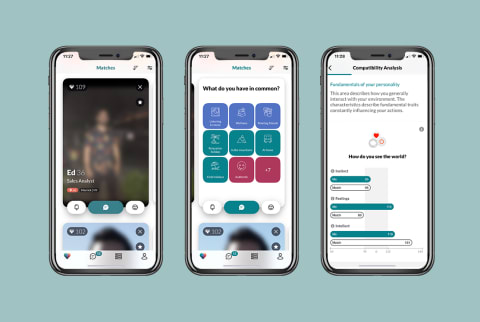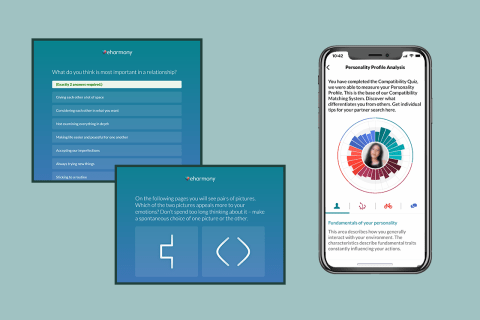In an email, a spokesperson for eharmony told me that over half of all its users are Gen Z or millennials (contrary to what some may assume about this classic dating site), and that 2.3 million messages are sent weekly. It says the platform’s demographic is 51% men and 49% women. In my research, it seems like many people turn to eharmony when they’re serious about finding a relationship and are willing to invest the time—given that you can only sign up for months at a time for the premium memberships. It feels like the place to go when you feel tired of the so-called endless options on other apps like Tinder or Hinge and don’t want to waste your time. The site urges you (and sometimes makes you) fill out a very detailed profile, which encourages a level of depth not always found on the simpler swiping apps (though, not everyone actually does this). Importantly, it’s safe to say only the paid membership is worth having–the free version pales in comparison. The website is pretty simple to navigate after that, and you can search for people to match—who are in the preferences you choose. When you visit someone’s profile, you get a compatibility score, which represents how your compatibility quiz results align. It was definitely interesting to scan through and see if they’re as empathetic as I am, if they’re more emotional or logical, or if they are adventurous. I could see how knowing some of those aspects would make me more or less interested in someone. And if you pay, you can also see people whose profiles you visited and vice versa. It’s important to note: There’s a huge difference between the free and paid versions once you get to the stage of seeing other profiles. To actually see your match’s photos and send messages, you have to pay for a premium membership. Otherwise, the photos will be blurred, and you’ll have very limited messaging capabilities. In other words, there’s honestly not much you can do without paying. You can only purchase eharmony subscriptions in monthly bundles of 6 months, 12 months, or 24 months. The longer you commit to the dating service, the cheaper per month it is. As of this writing, the six-month Premium Light membership costs $24/month (this appears to be a sale price; it says it costs $60/month regularly). That comes out to $144 total for the six months, which is the shortest and cheapest overall option. The 24-month Premium Extra membership costs $12/month (regularly $30/month), coming out to $288 total. However, mindbodygreen readers can save 20% on any membership with code MBG20. That said, the cost will not be worth it for many people. If you think about it, even the smallest bundle will end up costing you at least $144 ($360 regularly), and that might be too hefty a price tag for most daters, myself included. And probably because of that price tag, you shouldn’t expect as many potential matches to pick from as you’d get on free apps like Tinder and Hinge. I also feel like many of the users didn’t have as detailed profiles as the site would lead you to think. What sets eharmony apart from apps like Plenty of Fish and Match (we’ve got a full Match review too, by the way) is the compatibility factor, which takes some of the guesswork and labor out of matching and speaking to lots of people. It was interesting to see how certain qualities match or mismatch with others. At the same time, though, you may miss out on sparks with people who you aren’t considered compatible with. eharmony is definitely a slower, perhaps more intentional dating experience, but if that’s what you’re looking for, then this might be the dating app for you.








